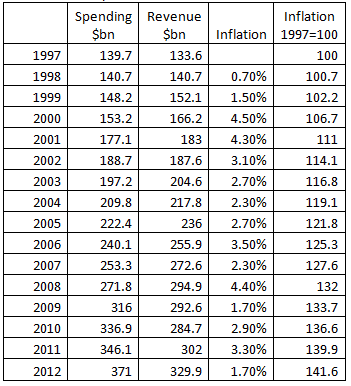Fast fashion is deadly
Judy Bamberger writes: Re. “Is there blood on your T-shirt? Questions from Bangladesh’s tragedy” (yesterday). How many more tragedies will there be before we understand that our push for “lowest prices” puts others in extreme danger?
The building collapse in Bangladesh — where perhaps 1000 human beings perished making our $5 big box-store T-shirts and $500 name-brand goods — is merely the latest example of those dying for our unsustainable, self-focused, consumption-driven lifestyles. Big-name brands and companies try to make amends after the fact by offering to pay some compensation. But what about us — consumers? Will we keep buying our $5 T-shirts at the big box stores offering us low, lower, lowest prices, or will we take personal responsibility for our contribution to the problem and put effort into buying responsibly?
Only when we as consumers demand better conditions for those who supply us, and accept the cost will the situation change for the better. If we don’t want more people dying on our unsustainable behalf, it’s time our money does the talking … we spend it where we know life is valued!
The truth about revenue
David Hand writes: Re. “Lessons from austerity front lines: cutting spending is not the answer” (Monday). Bernard Keane and Glenn Dyer’s article on austerity framed the discussion about cuts in terms of percentage of GDP. This is a trick that hides the inexorable rise in government spending by all Australian governments, both federal and state. The fact is that GDP grows. So a reduction in government spending to 23% of GDP as Dyer and Keane maintain that Howard government delivered in 2007 does not mean that actual spending went down. In fact, the Howard government spent $253 billion in 2007, an increase of $13 billion on the previous year. Therefore “cuts” described by Dyer and Keane are not cuts at all.
The explosion of spending under Labor due to the global financial crisis shows no sign of slowing four years later. It’s as though the GFC was permission for government spending to increase to twice its rate under Howard. There seems to be no narrative at all about why this spending trajectory is so steep.
The 1.5% “cut” Dyer and Keane talk about is not actually a reduction of government spending. All it means is that government spending will increase at a slower rate that economic growth. So if Australia’s GDP growth is greater than 1.5%, this can be achieved at the same time that real spending actually increases. So the statement about Wayne Swan “ripping money out of the budget in savage spending cuts” is not supported by the facts. Rest assured, Labor’s spending in 2013-14 will be higher than the current year whatever the hyperbole is.
Revenue is again growing strongly. You wouldn’t think so listening to the Treasurer.
Here are the numbers for those interested.
Source: Saturday’s AFR and the ABS.

IPA’s hypocrisy
Steve Simmonds writes: Re. “Tips and rumours” (yesterday). Does not that letter from John Roskam suggest they have a structural budget deficit, and a 14% deficit at that? Gillard only has a 10% one, and that is irresponsible!). And calling for “donations” to make up the difference … obviously better than calling them a levy or new tax. Oh, the hypocrisy!







Steve Simmonds, a great point. Dare one suggest the IPA (in a glasshouse and throwing stones) is a strong contender for sovereign risk?
When is David Hand going to start writing for Crikey?